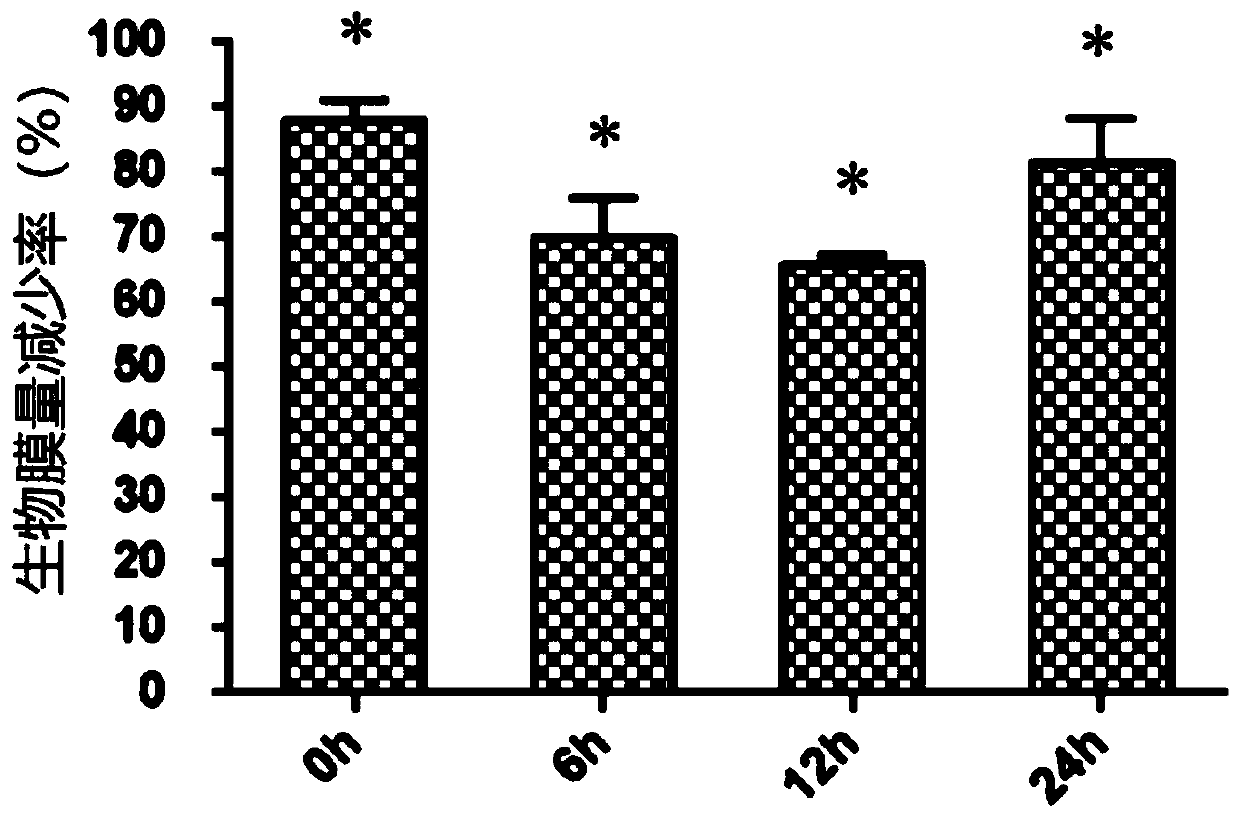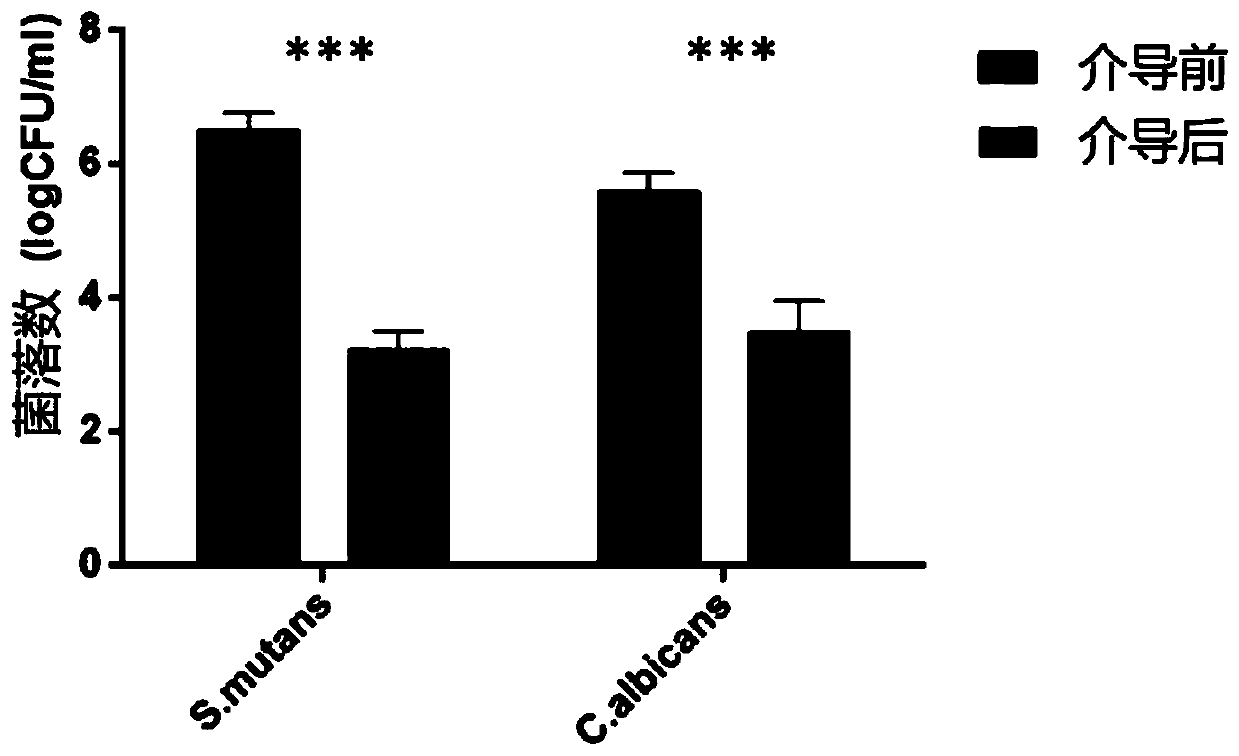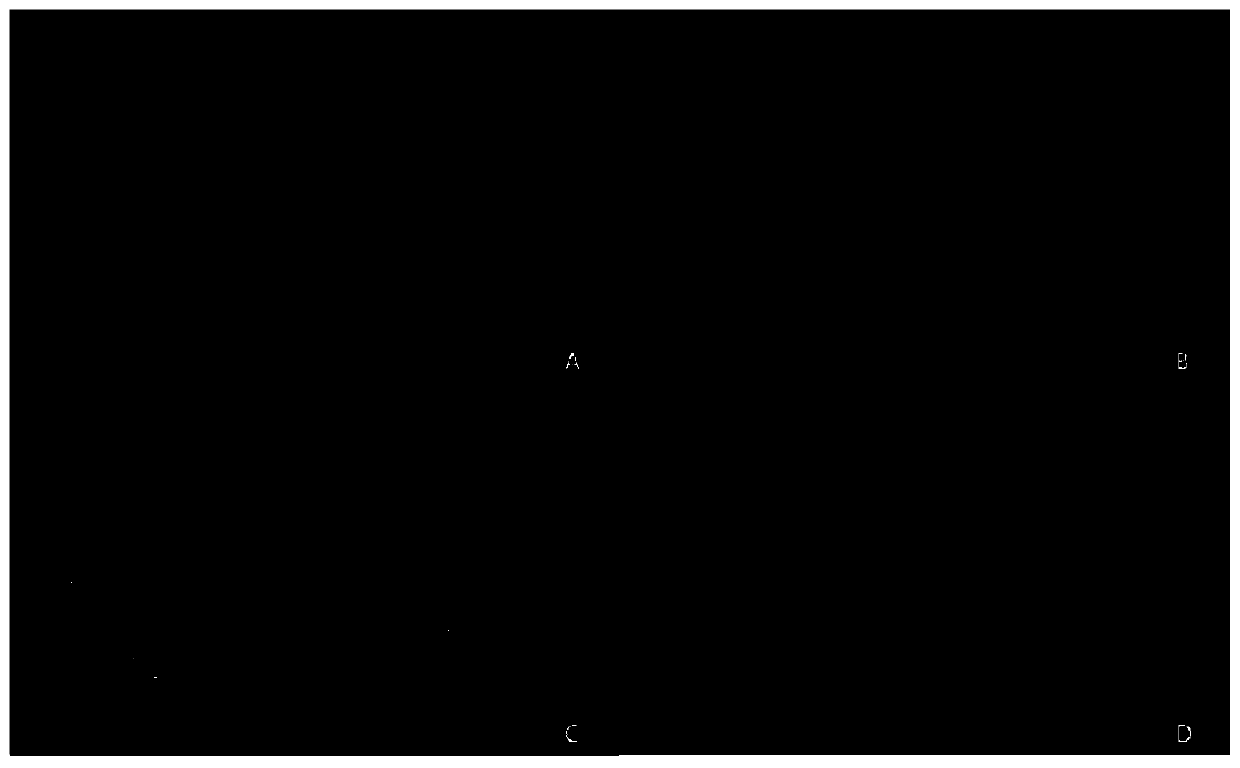Method capable of inhibiting streptococcus mutans and candida albicans double-bacteria biofilm
A technology of Candida bibacteria and Streptococcus mutans, applied in the field of microorganisms, can solve problems such as increasing the difficulty of caries treatment
- Summary
- Abstract
- Description
- Claims
- Application Information
AI Technical Summary
Problems solved by technology
Method used
Image
Examples
Embodiment 1
[0042] Example 1: Effect of Lactobacillus plantarum CCFM8724 on the amount of double bacterial biofilm formation
[0043] Add 50 μL each of Streptococcus mutans and Candida albicans suspensions to a 96-well plate, add 100 μL of Lactobacillus plantarum CCFM8724 supernatant at 0 h, 6 h, and 12 h, and incubate at 37 ° C for 24 h. The 24h-mediated method is to carefully wash the biofilm twice with PBS when the double-bacteria biofilm grows to 24h, add 100μL of the supernatant of Lactobacillus plantarum CCFM8724, and incubate at 37°C for 24h. For the dual-bacteria biofilm control, blank MRS liquid medium was used instead of Lactobacillus plantarum supernatant, and 6 parallels were set up in each group. After the cultivation, the biofilm was carefully washed 2 times with PBS. After the biofilm was left to dry at room temperature, 100 μL of 0.1% crystal violet solution was added to each well, and the biofilm was stained for 30 min. After the staining, the biofilm was washed 2 times w...
Embodiment 2
[0048] Embodiment 2: Effect of plantarum lactobacillus CCFM8724 on the number of pathogenic bacteria in double bacteria biofilm
[0049] Put a 18mm×18mm sterile cover glass in a 6-well plate, add 2mL each of Streptococcus mutans and Candida albicans suspension, add 250μL of the supernatant of Lactobacillus plantarum CCFM8724 at 0h, and incubate at 37°C for 24h, control with blank MRS liquid medium instead. After the cultivation, the coverslip with biofilm was clipped into a 50mL centrifuge tube with sterile tweezers, immersed in 10mL of 0.89% sterile saline, and the centrifuge tube was cleaned in an ultrasonic cleaning device for 2 hours to ensure that the biofilm The coverslip was eluted while suspended in normal saline. Gradually dilute the biofilm suspension, take 100 μL of the diluted suspension for each gradient, pour the plates with TSB medium and YPD medium respectively, count after 24 hours of cultivation at 37°C, and repeat the experiment three times in triplicate. ...
Embodiment 3
[0052] Embodiment 3: Effect of Lactobacillus plantarum CCFM8724 on the activity of double bacteria biofilm
[0053] CFSE dye: 8 μm, CFSE dye can stain live bacteria in biofilm.
[0054] PI dye: 4μM, PI dye can stain dead bacteria in biofilm.
[0055] Put a 24mm×50mm sterile cover glass in a disposable plate with a diameter of 90mm, add 8mL of each suspension of Streptococcus mutans and Candida albicans, and add the supernatant of Lactobacillus plantarum CCFM8724 at 6h, 12h, and 24h for mediation After 24 hours of mediation, the biofilm was taken out and placed in a fresh medium containing 2 mL of Lactobacillus plantarum CCFM8724 supernatant, and the supernatant was replaced by a blank MRS liquid medium for the double-bacteria biofilm control. ℃, cultivated for 24h. After the cultivation, carefully clean the biofilm, stain the biofilm in the dark room, first add 300 μL of CFSE dye to cover the entire cover slip, incubate at 37°C in the dark for 30 minutes, then wash the biofi...
PUM
 Login to View More
Login to View More Abstract
Description
Claims
Application Information
 Login to View More
Login to View More - R&D
- Intellectual Property
- Life Sciences
- Materials
- Tech Scout
- Unparalleled Data Quality
- Higher Quality Content
- 60% Fewer Hallucinations
Browse by: Latest US Patents, China's latest patents, Technical Efficacy Thesaurus, Application Domain, Technology Topic, Popular Technical Reports.
© 2025 PatSnap. All rights reserved.Legal|Privacy policy|Modern Slavery Act Transparency Statement|Sitemap|About US| Contact US: help@patsnap.com



